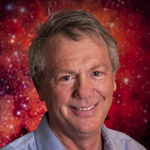Seminars are held at 4:00 PM on Tuesdays in Room F160
on the first floor of the Technological Institute (2145 Sheridan Road) unless otherwise noted
Fall Quarter 2011
| Date | Visitor / Seminar | Host | |
| Sept. 20 |  |
Dan Hooper Observations from the direct detection experiments DAMA/LIBRA, CoGeNT, and CRESST, along with those from the Gamma Ray Space Telescope, have been interpreted as possible evidence of dark matter in the form of relatively light (5-10 GeV) WIMPs. I will discuss the implications of these observations for dark matter phenomenology and discuss how it will be possible with future measurements to either confirm or refute this interpretation. | Farhad Zadeh |
| Sept. 27 |
 |
Eliot Quataert Galaxy clusters are among the largest gravitationally bound objects in the universe. The majority of the baryonic mass in clusters resides in a hot, low density plasma that pervades the intracluster medium (rather than in stars). The heating and cooling processes in this plasma must be understood in order to make progress on a number of key problems in galaxy formation, including the formation of the most massive galaxies and black holes in the universe. An understanding of galaxy cluster thermodynamics is also important for the use of clusters as cosmological probes into the nature of dark matter and dark energy. In this talk, I will describe new insights into the physics of cluster plasmas, focusing on (1) the physics of novel forms of convection that arise in dilute plasmas, and (2) the subtle imbalance between heating and cooling processes that leads to the development of cool gas embedded in the ambient hot intracluster medium. I will also describe the importance of this physics for galaxy formation and for the use of clusters as cosmological probes. |
Yoram Lithwick |
| Oct. 4 |
 |
Cornelia Lang Recent multi-wavelength studies of the Galactic Center region have revealed that massive stars play a dominant role in this unique and energetic environment. Because of the significant visual absorption (up to 30 magnitudes!), astronomers rely on radio, infrared and X-ray observations to uncover the nature of the stellar and interstellar medium. Infrared and radio emission can provide important constraints on the ionizing radiation from massive stars as well as the impact of massive stellar winds in the ISM. In addition, the physical nature of molecular clouds (which give rise to the massive stars) and their heating mechanisms in this region are currently being investigated through radio observations at high frequencies. I will present highlights from recent high-resolution infrared and radio studies of the Galactic center (using Hubble Space Telescope, Spitzer Space Telescope and the Expanded VLA (EVLA)) which aim to address these issues. |
Farhad Zadeh |
| Oct. 11 |
 |
Mitch Begelman The supermassive black holes that populate galactic nuclei could have grown from an early population of stars, or via the direct collapse of much larger masses of gas. I will discuss recent investigations of the latter possibility, focusing on the physics that may have regulated early black hole formation and growth. Black hole formation by direct collapse implies the existence of hitherto undetected classes of objects; I will outline the prospects for detecting them. | Vicky Kalogera |
| Oct. 18 *Ryan Auditorium |
 |
Ray Jayawardhana On-going searches for extrasolar planets, despite certain limitations in sensitivity, have already revealed a remarkable diversity of worlds --from close-in super-Earths to far out super-Jupiters-- and challenged our preconceptions many times over. Meanwhile, comparative studies of exoplanet physical properties have begun in earnest: planets caught in transit and those imaged directly are best suited for detailed characterization, especially of their atmospheres. I will discuss recent results and future prospects, including the possibility of extending these techniques to lower-mass planets.
|
*CIERA Colloquium* Nick Cowan |
| Oct. 25 |  |
Nick Moeckel Stellar clusters, their component stars, and the planets around those stars form from gaseous initial conditions; after their formation these systems evolve via gravitational interactions. The transition between the gas-dominated and n-body regimes can be an interesting (and complicated) phase, with interactions between the remnant gas and the stars and planets altering the n-body dynamics, and the n-body dynamics leaving their imprint on the gas. I will discuss recent studies of this transitional regime on scales from planets to clusters. |
Fred Rasio |
| Nov. 1
*Ryan Auditorium |
 |
Bob Kirshner Exploding stars halfway across the universe reveal an extraordinary fact: the expansion of the universe is speeding up. We attribute this to a dark energy that acts to make the universe spring apart. The resulting picture is a truly strange one: most of the universe is in the form of dark matter we cannot see and dark energy we do not yet understand. Only 4% of the mass-energy of the universe is in the form of atoms that can make stars, galaxies, planets, and people. This talk will show how we know the universe is accelerating and sketch how today's idea of dark energy resembles Einstein's cosmological constant, an idea he invented in 1916 and discarded in 1931. |
*CIERA Annual Public Lecture* Vicky Kalogera |
| Nov. 8 | Matija Cuk The prevailing theory for the formation of the Moon is a giant impact between proto-Earth and a Mars-sized protoplanet, with the Moon being mainly derived from the impactor. It is now known that the composition of the Moon is too simular to Earth's mantle to be derived from the impactor, seriously questioning the giant impact theory. However, this is a problem only if we assume that little or no angular momentum was lost from the system since its formation. While lunar tides keep the angular momentum in the system, certain resonances can transfer angular momentum to Earth's heliocentric orbit. These resonances are important if the Earth-Moon system formed with a much larger angular momentum, and can evolve the system to the present state. I conclude that the Moon likely formed in a impact-triggered fission different from the "classical" giant impact scenario. |
Fred Rasio | |
| Nov. 15 |  |
Ian Dobbs-Dixon The past decade has seen an unprecedented increase in our understanding of planetary formation and evolution with the discovery of more then 550 extrasolar planets. For the subset of them that transit their host stars, we are able to constrain some aspects of atmospheric constituents and dynamics through spectra and phasecurves. Short period planets experience strong tidal forces, and as such are thought to have permanent day/night sides. Thus, these planets exist in a regime unlike any in the solar system. With the help of multidimensional hydrodynamical models, we are beginning to understand the atmospheric dynamics of these planets. I will present 3D radiative-hydrodynamical models of highly irradiated gas-giant planets and discuss observational constraints applicable to both ongoing campaigns and future missions. Such observations are beginning to help us distinguish between some aspects of the predicted flow patterns and also the potential role of the atmosphere in altering the evolution of the planet as a whole. |
Nick Cowan |
| Nov. 22 |  |
Julie McEnery Following its launch in June 2008, high-energy gamma-ray observations by the Fermi Gamma-ray Space Telescope have unveiled over 1000 new sources and opened an important and previously unexplored window on a wide variety of phenomena. These have included the discovery of an population of pulsars pulsing only in gamma rays; the detection of photons up to 10s of GeV from gamma-ray bursts, enhancing our understanding of the astrophysics of these powerful explosions; the detection of hundreds of active galaxies; a measurement of the high energy cosmic-ray electron spectrum which may imply the presence of nearby astrophysical particle accelerators; the determination of the diffuse gamma-ray emission with unprecedented accuracy and the constraints on phenomena such as supersymmetric dark-matter annihilations and exotic relics from the Big Bang. Continuous monitoring of the high-energy gamma-ray sky has uncovered numerous outbursts from active galaxies and the discovery of transient sources in our galaxy. In this talk I will describe the current status of the Fermi observatory and review the science highlights from Fermi. |
Farhad Zadeh |
| Nov. 29 |  |
Matt Hedman For the last seven years, the Cassini spacecraft has been in orbit around Saturn, making a wide variety of measurements of the planet, its moons and its rings and providing abundant new information about the diverse range of dynamical phenomena occurring in this complex system. In particular, Saturn's diverse rings provide an unique opportunity to investigate the physical processes operating in these nearby astrophysical disks at high resolution and in great detail. For example, Cassini data is finally allowing us to probe the structure and dynamics of the densest regions in Saturn's main rings, which are nearly opaque and have been extremely difficult to theoretically analyze or numerically simulate. Meanwhile, Saturn's dusty faint rings contain puzzling asymmetric structures that appear to be aligned with the sun and therefore are likely generated by non-gravitational forces like solar radiation pressure. Finally, some features in the rings even seem to be echoes of discrete events like cometary impacts that occurred decades before Cassini reached Saturn, and can therefore be used to trace the recent history of the Saturn system. |
Yoram Lithwick |
| Dec. 6 | Brad Cenko When a star passes within the sphere of influence of a massive black hole, tidal forces will tear the star apart. A fraction of the debris returns to the black hole on highly elliptical orbits and forms an accretion disk, resulting in a luminous, thermal flare of radiation. These tidal disruption flares (TDFs) offer a novel method to probe the nuclei of distant, otherwise quiescent galaxies. While a number of previous candidates have been discovered in archival X-ray and UV surveys, we report on our efforts to discover these sources in real-time in the optical bandpass, both with the Palomar Transient Factory (PTF) and the Katzmann Automated Imaging Telescope (KAIT). Much to our surprise, in 2011 the Swift satellite (a hard X-ray gamma-ray burst mission) discovered two unusual high-energy transients, which appear to result from the birth of relativistic jet in the nuclei of previously inactive galaxies. Based on a variety of lines of evidence, we suggest these relativistic outflows may also result from the tidal disruption process, but the associated nonthermal emission is only visible from favorable viewing angles. The broader implications of these relativistic TDFs are quite profound, as they may dominate the event rate from future wide-field radio surveys. |
Vicky Kalogera |
Past Astrophysics Seminars